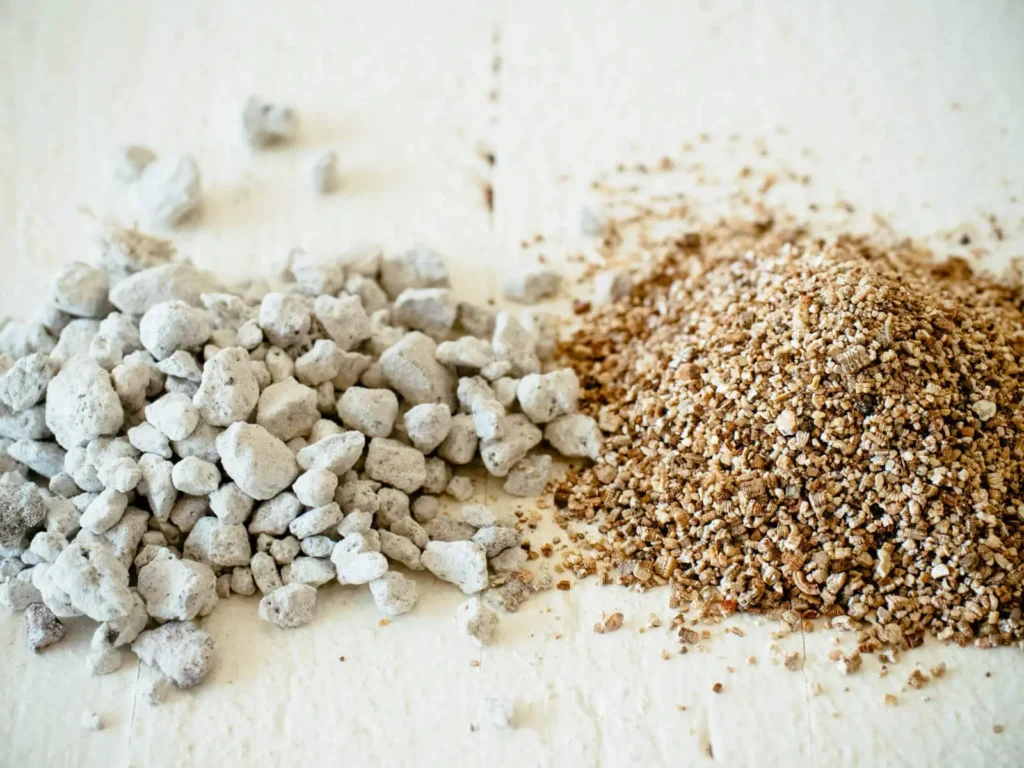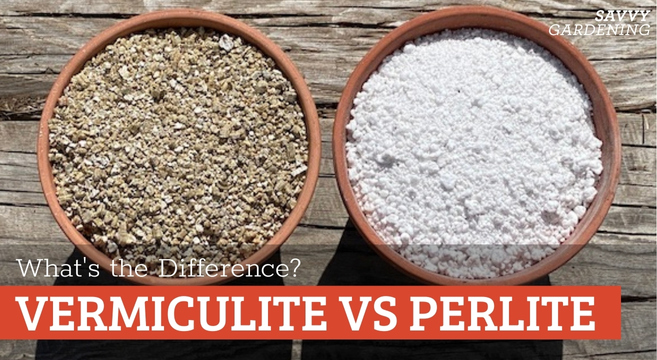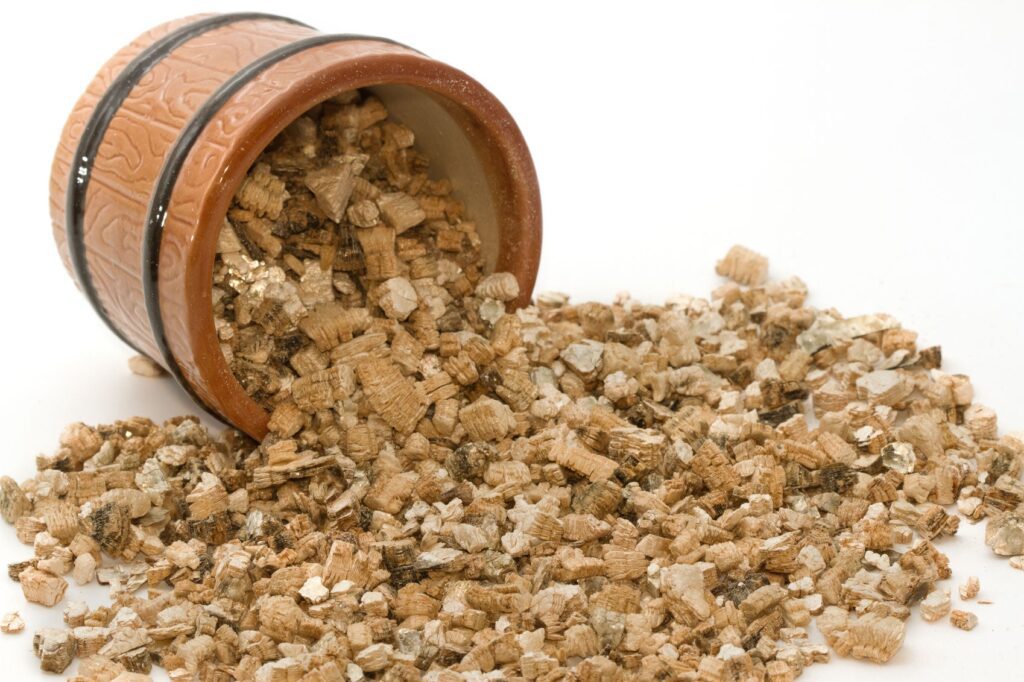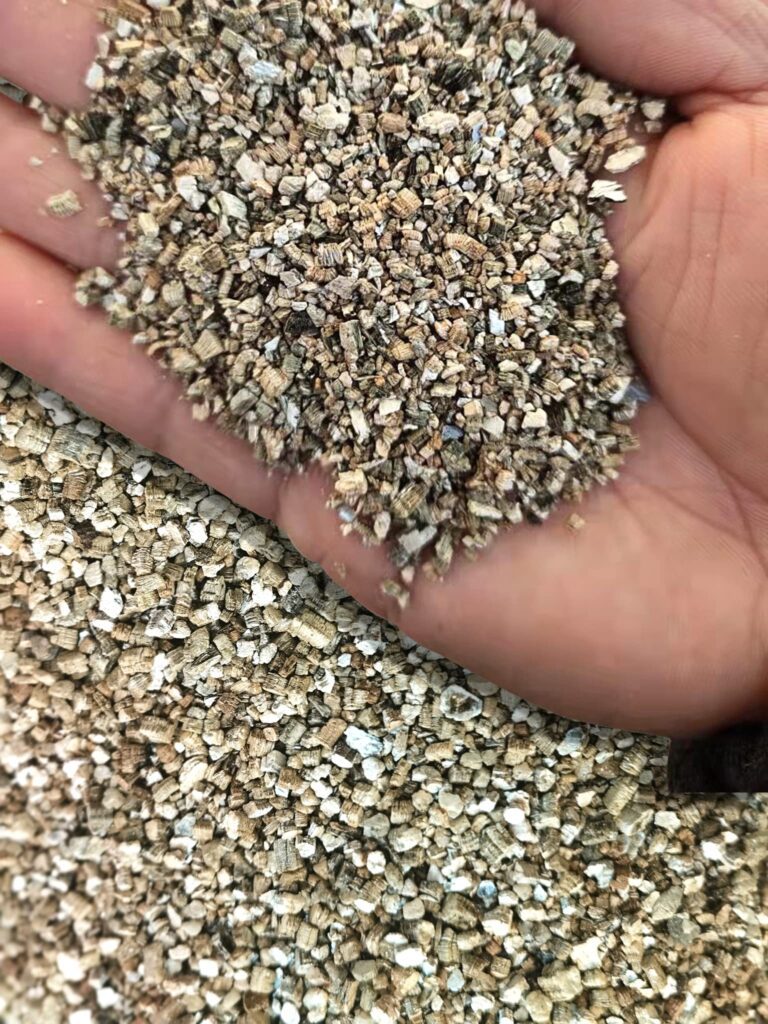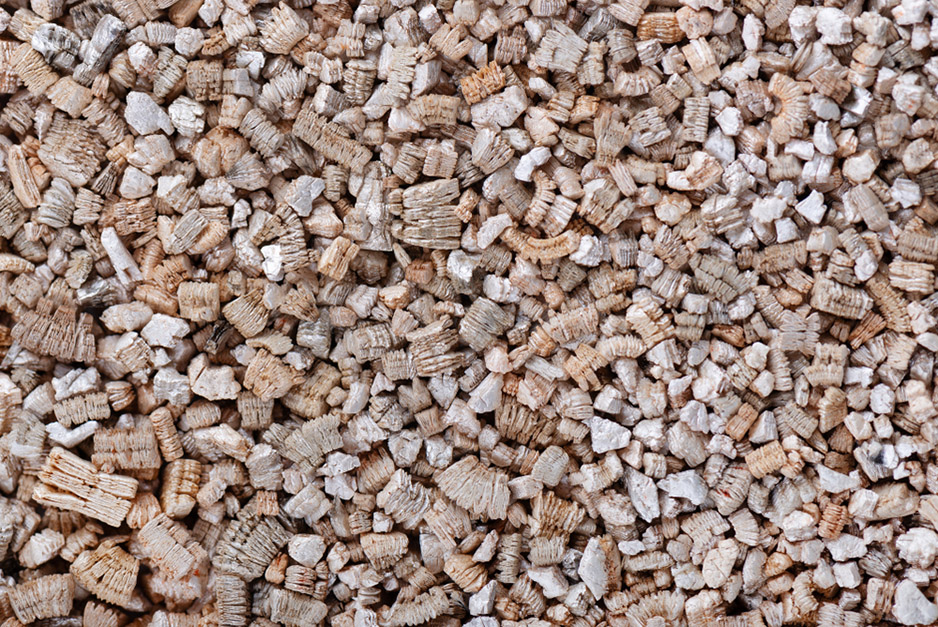If you’ve ever wondered about the differences between perlite and vermiculite, you’re not alone. Many gardening enthusiasts have pondered whether these two materials are synonymous or if they serve distinct purposes in horticulture. In this article, we will explore the characteristics of perlite and vermiculite to shed light on their similarities and differences, helping you make informed decisions for your gardening endeavors. So, let’s dig in and discover the unique properties and applications of these two remarkable soil amendments.


Perlite
Definition
Perlite is a naturally occurring mineral that is extracted from volcanic rocks formed through the rapid cooling of lava. It is a type of volcanic glass that expands when heated to form a lightweight and porous material. The expansion process involves heating the perlite ore to a temperature of approximately 1,600 degrees Fahrenheit (871 degrees Celsius), which causes the water content within the ore to vaporize and expand, resulting in a popcorn-like structure.
Characteristics
Perlite has several unique characteristics that make it a versatile material. It is extremely lightweight, with a density ranging from 80 to 160 kilograms per cubic meter. This low density makes it ideal for applications where weight is a concern, such as in lightweight concrete, horticulture, and insulation. Perlite is also highly porous, with numerous tiny air pockets within its structure. This porosity gives it excellent thermal and acoustic insulation properties. Additionally, perlite is chemically inert, meaning it does not react with other substances or release harmful compounds, making it safe to use in various applications.
Uses
Perlite finds its application in a wide range of industries due to its unique properties. In construction, it is commonly used as an aggregate in lightweight concrete, providing a lighter and more thermally efficient alternative to traditional concrete. In horticulture, perlite is utilized as a soil amendment to improve drainage and aeration, promoting healthy root growth in plants. Its lightweight nature also makes it an ideal component in potting mixes. Perlite is also used as a filter aid in the food and beverage industry, as it can effectively separate solids from liquids. Additionally, it finds use in the manufacturing of fire-resistant boards, cryogenic insulation for storage tanks, and as an abrasive in certain cleaning products.
Vermiculite
Definition
Vermiculite, like perlite, is a naturally occurring mineral with unique properties. It is formed through the weathering of certain types of mica minerals. The ore is extracted from mines and undergoes a heat treatment process, similar to perlite, to expand it into a lightweight and highly absorbent material.
Characteristics
One of the main characteristics of vermiculite is its ability to expand and exfoliate when heated. The expansion process occurs at a slightly lower temperature compared to perlite, usually around 1,100 degrees Fahrenheit (593 degrees Celsius). This expansion allows vermiculite to increase in volume by up to 20 times its original size, resulting in a lightweight material with excellent water-holding capacity. Vermiculite is also soft and easily workable, making it suitable for various applications.
Uses
Vermiculite has diverse uses across industries. In gardening and horticulture, it is commonly used as a soil amendment to increase water retention and provide improved aeration to the soil. Due to its absorbent nature, vermiculite also finds use in seed germination, as it can retain moisture and create an optimal environment for seedlings to grow. Furthermore, it is used as a heat-resistant material in fire protection products, such as fireproof coatings and insulation. Vermiculite is also used as a filler in construction materials, including lightweight concrete, plaster, and drywall, due to its lightweight nature and thermal insulation properties. Additionally, it finds application in packaging, animal feed additives, and as a component in vermiculite-based insulation panels for appliances.
Differences Between Perlite and Vermiculite
Chemical Composition
The chemical composition of perlite and vermiculite differs, resulting in distinct characteristics and applications. Perlite is primarily made up of silicon dioxide (SiO2) combined with small amounts of aluminum oxide (Al2O3), magnesium oxide (MgO), and other trace elements. On the other hand, vermiculite contains a higher percentage of hydrated magnesium aluminum silicate, with the addition of iron, potassium, and calcium. This variation in composition contributes to the differences in their physical properties, such as expansion characteristics and water absorption capacities.
Physical Properties
Perlite and vermiculite differ in their physical properties. Perlite, when expanded, forms a lightweight material with a porous structure. It has a slightly higher density compared to vermiculite, ranging from 80 to 160 kilograms per cubic meter. Vermiculite, on the other hand, can expand to a much larger volume and has a lower density, typically ranging from 60 to 120 kilograms per cubic meter when expanded. This difference in physical properties affects their usage in various applications, as perlite’s lightweight and porous structure make it suitable for insulation purposes, while vermiculite’s high absorbency makes it favorable for water retention in gardening.
Water Absorption
Another notable difference between perlite and vermiculite is their water absorption capacities. Perlite has limited water absorption due to its porous structure, which allows water to drain freely through it. This property makes perlite an excellent choice for applications where good drainage is crucial, such as in horticulture. On the other hand, vermiculite is highly absorptive and can retain water up to three to four times its dry weight. This high water retention capability makes it ideal for applications where moisture retention is essential, such as in seed germination and gardening.
Insulation Properties
Perlite and vermiculite possess different insulation properties. Due to its porous structure and low density, perlite exhibits excellent thermal insulation properties. It can be used as an insulating material in various applications, including construction, cryogenic storage, and fire protection, to name a few. Vermiculite, with its highly absorbent nature, also provides some insulation benefits, but it is predominantly valued for its fire resistance properties. It is commonly used in high-temperature applications, such as fireproof coatings and insulation, due to its ability to withstand extreme heat without burning or releasing harmful gases.
Cost
When it comes to cost, perlite is generally more affordable than vermiculite. The production process of perlite is relatively straightforward and cost-effective, resulting in a lower price point. Vermiculite, on the other hand, involves a more complex production process, including the heat treatment and exfoliation steps, which often contributes to its higher cost. However, the cost of both materials may vary depending on factors such as location, availability, and demand within a specific market or region.
Environmental Impact
In terms of environmental impact, perlite and vermiculite have different considerations. Perlite is considered environmentally friendly as it is a naturally occurring mineral and does not contain harmful substances. Its extraction process is generally less detrimental to the environment compared to other mining activities. On the contrary, vermiculite mining has faced environmental concerns in the past due to the presence of asbestos in some vermiculite deposits. However, extensive testing and quality control measures are now in place to ensure the safety of vermiculite products. As with any mining activity, responsible mining practices should be followed to minimize the impact on the environment.
Similarities Between Perlite and Vermiculite
Natural Minerals
Both perlite and vermiculite are natural minerals that are mined from the earth. They are formed through different geological processes but share the characteristic of being naturally occurring substances. This natural origin contributes to their inherent properties and suitability for various applications.
Agricultural Uses
Both perlite and vermiculite find extensive use in the field of agriculture and horticulture. They are commonly employed as soil amendments to enhance soil properties and improve plant growth. Both materials aid in improving drainage and aeration of the soil, which promotes healthy root development in plants. Additionally, they contribute to water retention in the soil, ensuring plants receive adequate moisture. Perlite and vermiculite are often incorporated into potting mixes, gardening soils, and hydroponic systems to provide optimal growing conditions for plants.
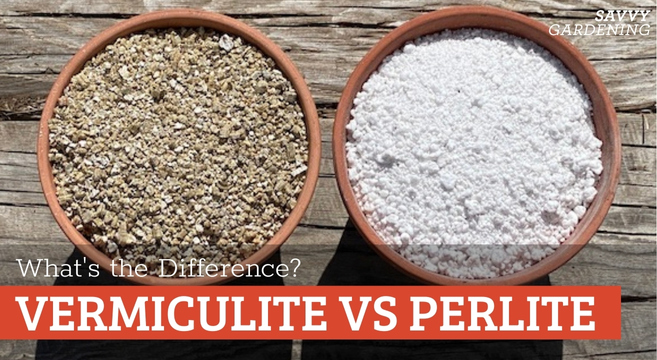

How Perlite and Vermiculite Are Made
Perlite Production Process
The production process of perlite involves several steps. Initially, the raw perlite ore is mined from volcanic deposits. The ore is then crushed and milled to achieve the desired size distribution. It is further heated in a furnace at temperatures around 1,600 degrees Fahrenheit (871 degrees Celsius), causing the water content within the ore to vaporize and expand, resulting in the characteristic lightweight and porous structure of expanded perlite. After expansion, the perlite is screened to separate different sizes and is then cooled before packaging and distribution.
Vermiculite Production Process
Similar to perlite, vermiculite undergoes a production process that involves mining and heat treatment. The mined vermiculite ore is crushed and screened to remove any impurities. It is then subjected to a heat treatment process in a furnace, typically at temperatures around 1,100 degrees Fahrenheit (593 degrees Celsius). This heat causes the vermiculite to expand and exfoliate, resulting in a lightweight material that can absorb and retain water. The expanded vermiculite is then screened for size and quality before being packaged for various applications.
Choosing Between Perlite and Vermiculite
Application
When choosing between perlite and vermiculite, consider the specific application requirements. Perlite is often preferred in situations where lightweight insulation and good drainage are essential, such as in lightweight concrete and horticultural applications. On the other hand, vermiculite’s high water absorption capacity makes it suitable for applications where moisture retention and fire resistance are crucial, such as in gardening and fireproofing.
Availability
Availability may also influence the choice between perlite and vermiculite. While both materials are widely available, their availability may vary based on geographical location and local markets. It is essential to consider the accessibility of each material to ensure its availability for ongoing projects and future needs.
Price
Cost considerations play a role in decision-making as well. Perlite is generally more affordable than vermiculite due to the production processes involved. However, prices can fluctuate based on factors such as location, demand, and availability. It is advisable to compare prices and consider the overall cost implications when choosing between perlite and vermiculite.
Personal Preference
Personal preference may also influence the choice between perlite and vermiculite. Some individuals may have previous positive experiences with one material over the other or may prefer the specific properties and characteristics of either perlite or vermiculite based on their unique needs and preferences. It is essential to consider personal experiences and preferences to ensure the chosen material aligns with individual requirements.
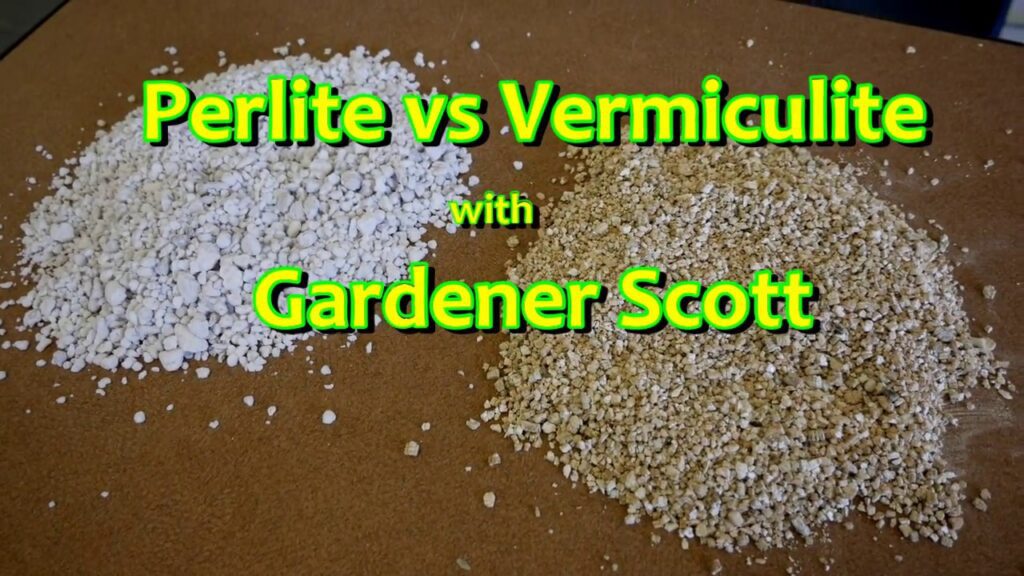

Conclusion
In summary, perlite and vermiculite are distinct materials with unique properties and characteristics. Perlite is a lightweight, porous mineral known for its insulation properties and excellent drainage capabilities. It finds uses in construction, horticulture, and industrial applications. Vermiculite, on the other hand, is a lightweight and absorbent mineral with high water retention and heat resistance properties. It is primarily used in gardening, construction, and fireproofing applications. While both materials share similarities as natural minerals and find uses in agriculture, they differ in chemical composition, physical properties, water absorption, insulation capabilities, cost, and environmental impact. When choosing between perlite and vermiculite, factors such as application requirements, availability, price, and personal preference should be considered. Overall, both materials offer unique benefits and contribute to various industries, making them valuable resources in their respective applications.

